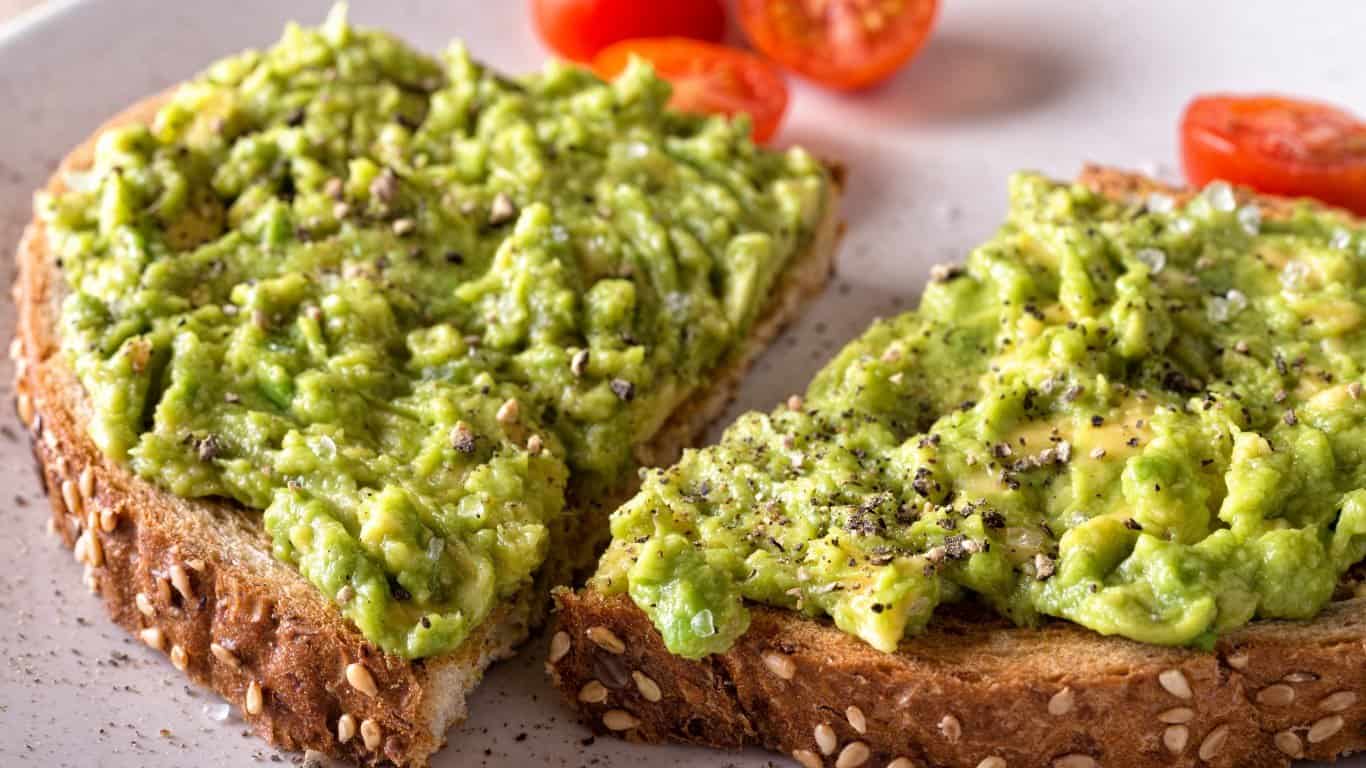Shopping trends can say a lot about different generations. Considering the youngest millennials are still in their twenties and the oldest are in their early forties, there’s a lot of variety in their shopping habits. One thing we do know is the items Millennials are buying at grocery stores are incredibly different from the kind of food previous generations were eating as young adults.
No matter what age range they fall in, many Millennials aren’t typically filling their carts full of cheap, over-processed foods. Even on smaller budgets, they enjoy the finer things in life but they’re not afraid to indulge in a tasty treat now and then either. In the typical Millennial shopping cart, you’ll find a variety of fresh fruits and vegetables, plant-based foods, and probably a pint or two of ice cream (usually dairy-free, of course.)
When we look at the overall food trends and what we know about Millennial grocery shopping habits, we can make some predictions about the things millennials are buying at the grocery store in 2024. (Click here for the top food and drink trends of 2023.)
To compile this list of items in a Millennial shopping cart, 24/7 Tempo referenced food and news publications such as the Food Network and Food & Wine, among others. If you’re ready to shop like a Millennial, check out the 10 things Millennials are loading up on at grocery stores in January 2024.
1. Plant-Based Meat Substitutes
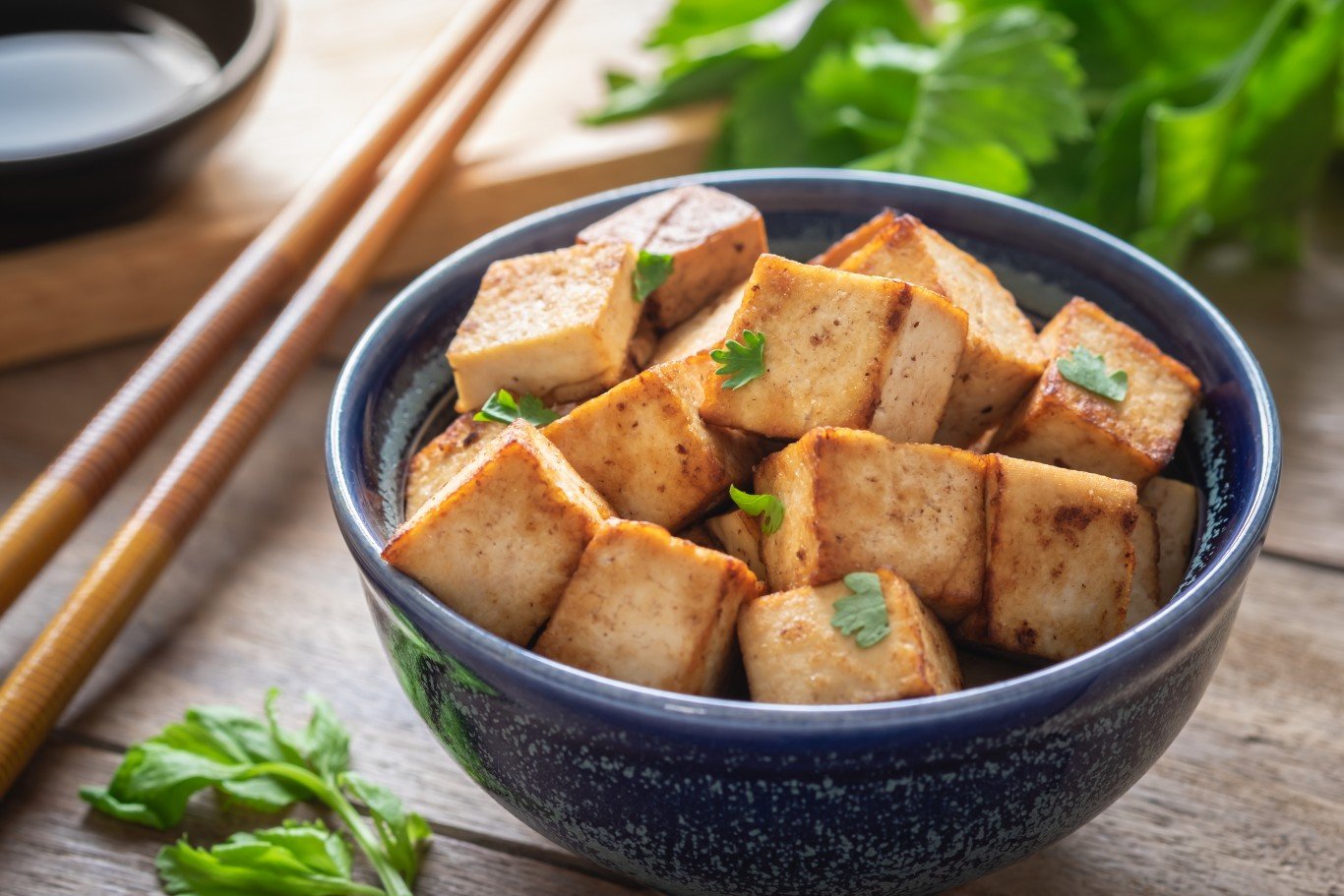
With a rise in vegan and vegetarian eating, plant-based meat substitutes are still in. Items like tofu, tempeh, and beans as a substitute for meat are popular choices. However, there are also more options out there for meatless meat, which have become more trendy in recent years.
While “plant-based” may have become a buzzword among Millennials, the practice of eating less meat isn’t just about being health-conscious. It’s also about sustainability and concerns about the ethics behind farming practices.
2. Non-Alcoholic Drinks
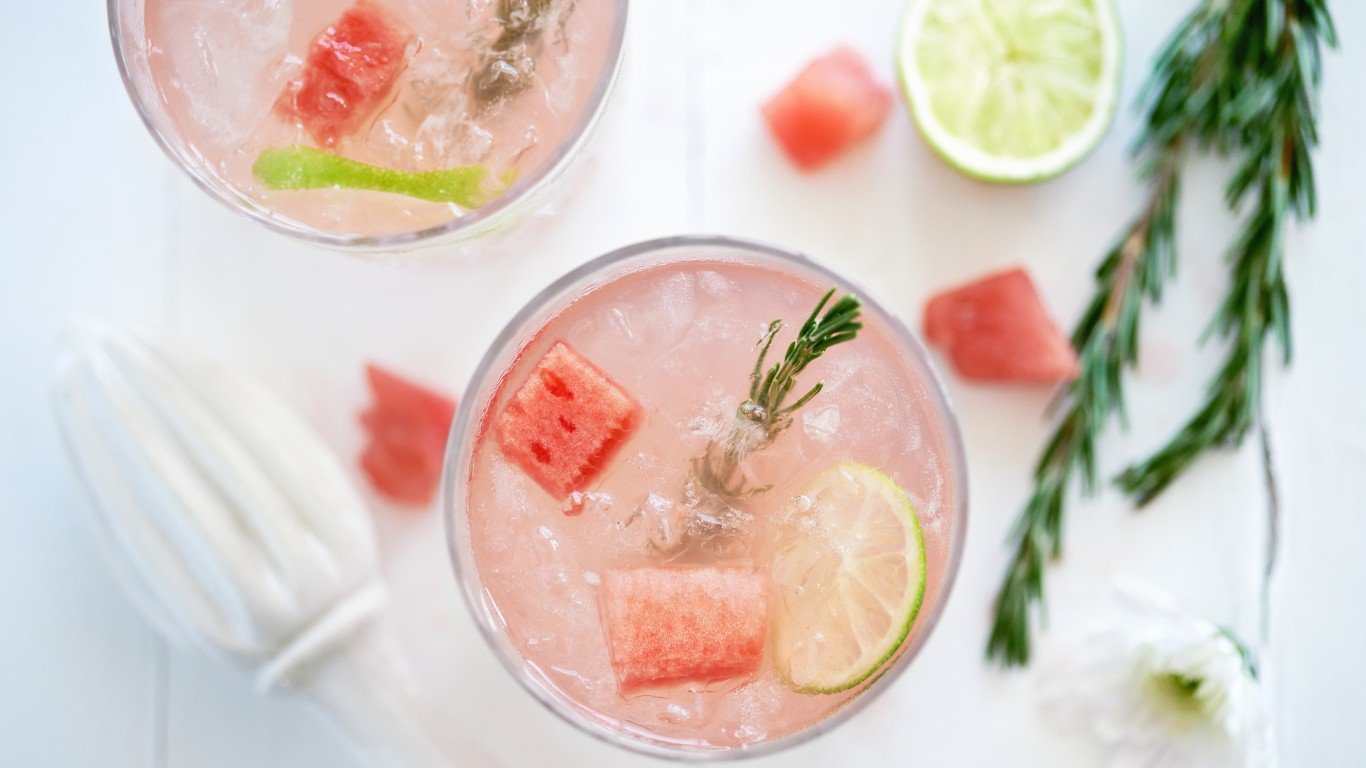
Gone are the days when young adults needed alcohol to have a good time. One study showed that young adults have been drinking alcohol less and less over the past two decades. But Millennials still want to enjoy a tasty drink, right?
This trend has led to an increase in Millennials purchasing non-alcoholic mocktail-type drinks, or even making them on their own. There are also other trendy drink choices, such as kombucha or prebiotic soda such as those made by Poppi or Olipop.
3. High-Protein Snacks
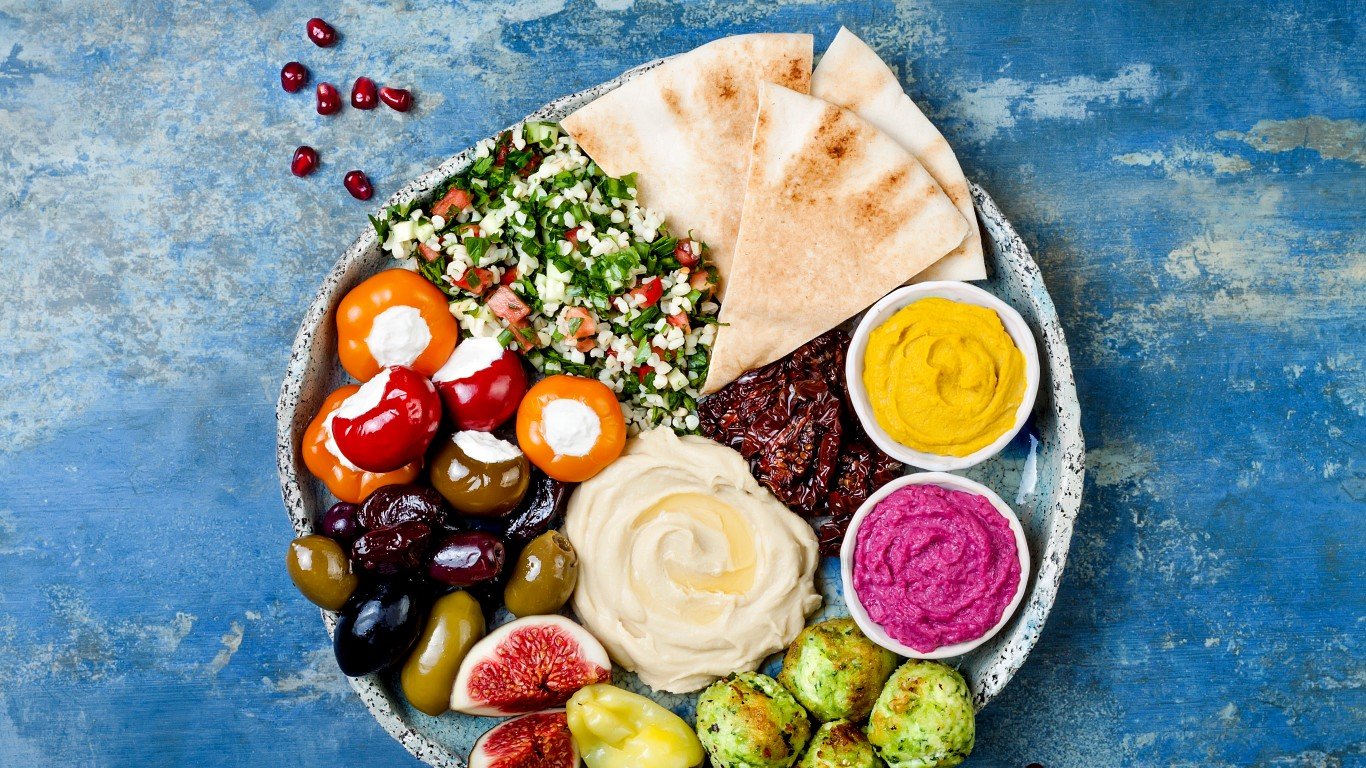
If you’re wondering what Millennials are snacking on, you’ll certainly find high-protein snacks on the list of things they’re buying. The schedule and eating habits of most Millennials make it difficult to eat three full meals a day.
Instead, many Millennials eat one to two meals a day with numerous snacks in between. Whether this is due to a busy work schedule or constantly being on the go, high-protein snacks such as nuts or jerky are a great way to stay full between meals.
4. Fresh Fruits
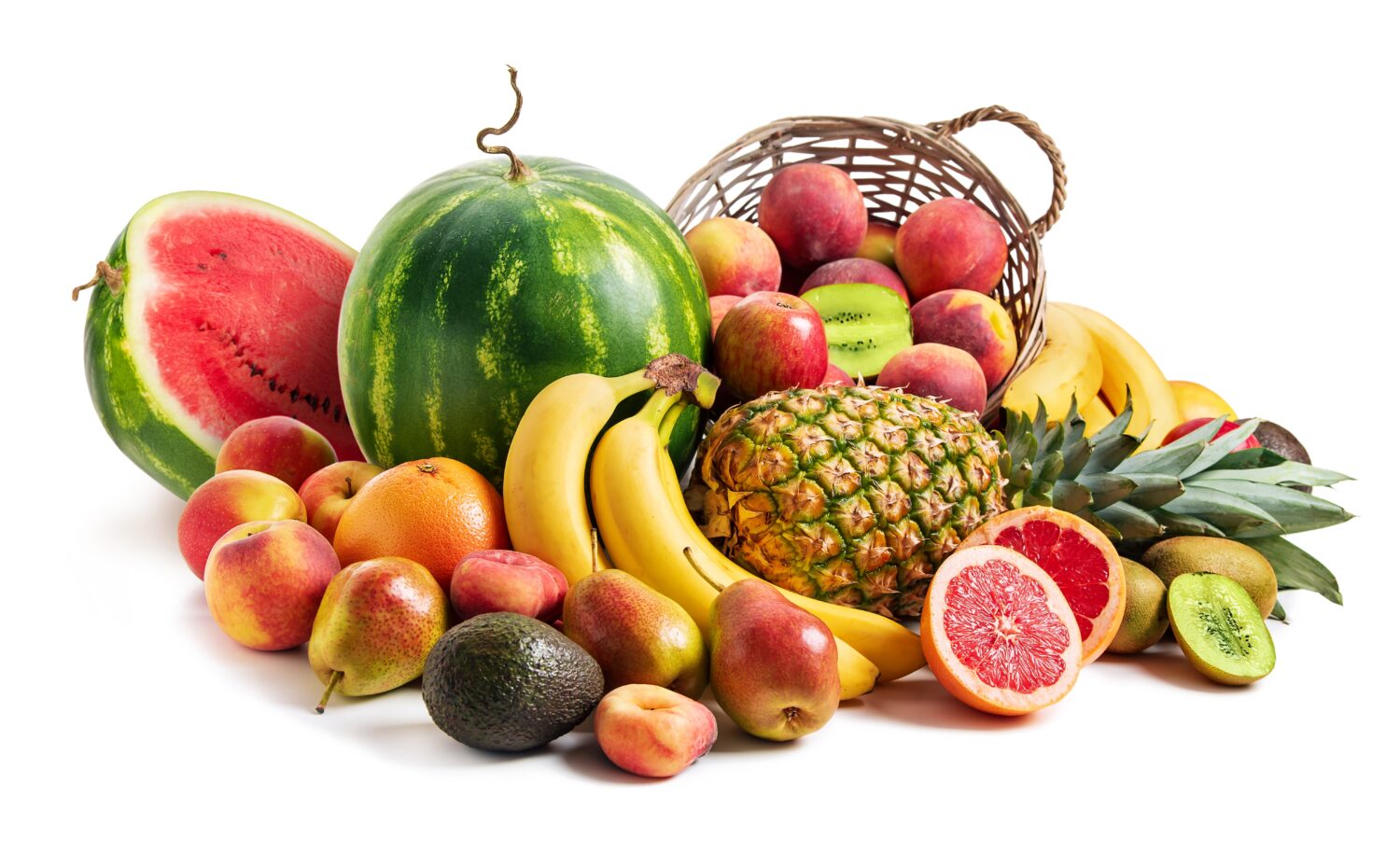
We’re all aware that Millennials love avocado toast, but avocados aren’t the only fruit that Millennials are loading up on at the grocery store.
Shopping trends have shown that Millennials care about clean ingredients and eating fresh fruits and vegetables, even though they’re known for treating themselves as well. Considering the popularity of things like smoothie bowls, fruits are a must-have in every Millennial kitchen.
5. Sweet Treats

Thanks to social media trends, “treat culture” has become more popular, especially for Millennials and Gen Z. Even though Millennials are more health conscious than Gen X and Baby Boomers, they also believe in having a little treat as a reward.
There’s really no limit in Millennial culture to what they can reward themselves for. Successful work week? Treat yourself. Completed all your errands? Treat yourself. Left the house? Treat yourself. We’re all about this trend of little treats to get you through the day.
6. Faux Fish
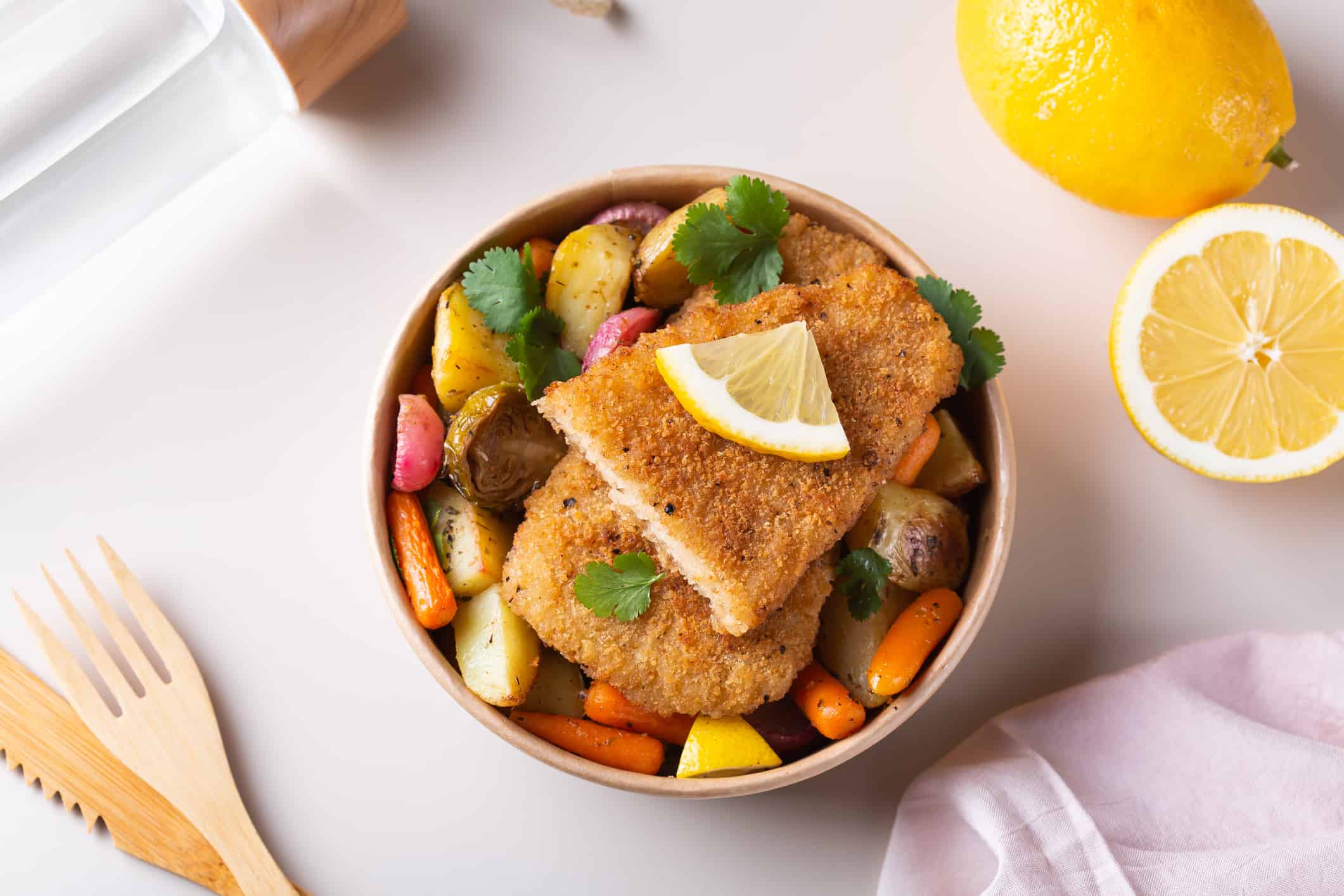
Food to reduce carbon footprint. Vegan Plant based fish with crispy batter and roasted vegetables in a zero waste reusable recycling cardboard packaging
Caviar has been a growing trend for a while, but it’s not the only fishy item that Millennials are buying. Fish has merged with the world of vegan eating with a rising trend in plant-based seafood. In fact, plant-based seafood has been one of the fastest-growing trends in plant-based eating in recent years.
Whether it’s poke bowls made out of a root vegetable or cell-cultured fish, this trend is popular due to the rise in plant-based eating as well as sustainable practices for ocean conservation. This unique trend is a simple way to encourage ethical practices while still keeping sushi on the menu.
7. Plant-Based Milk
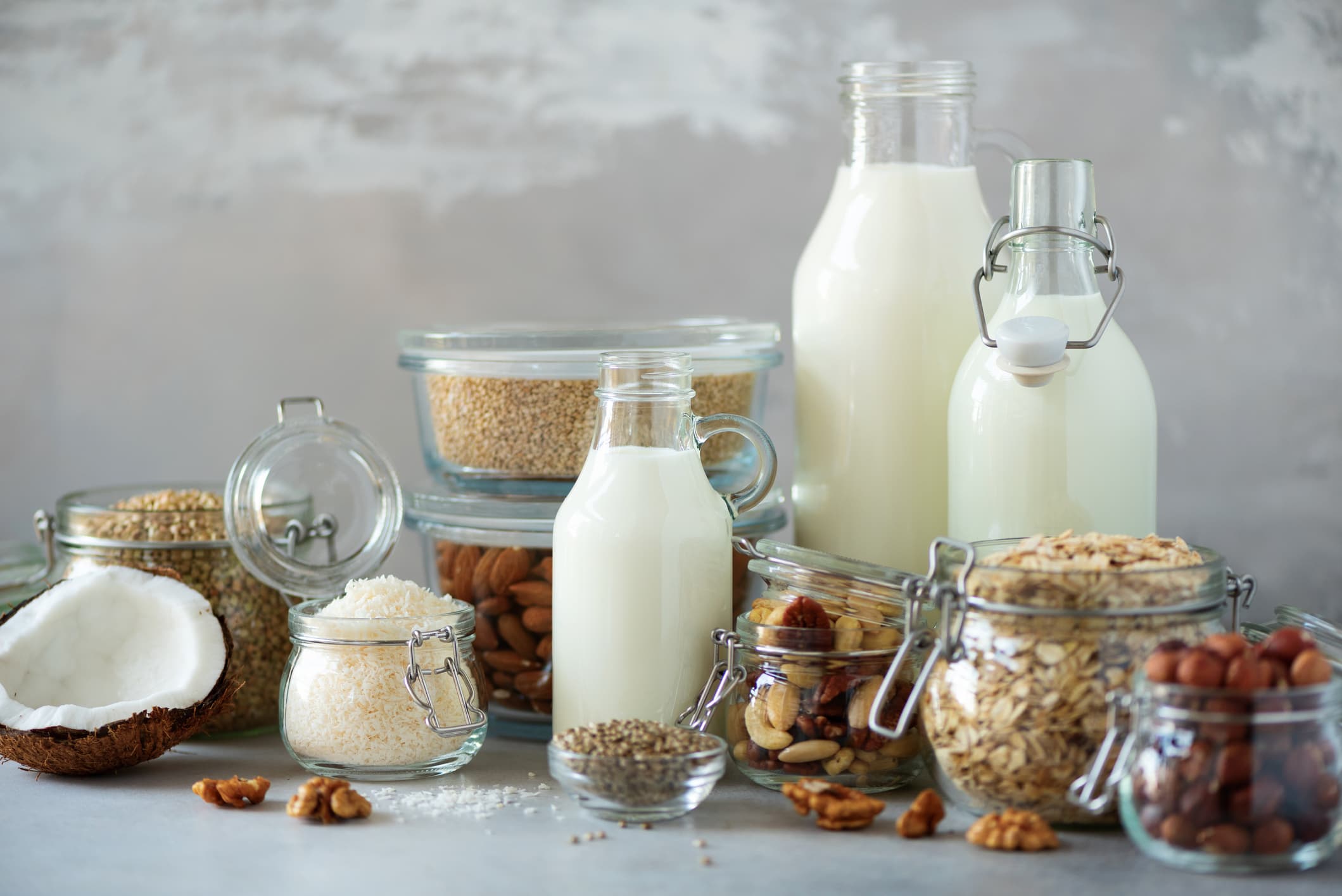
Glass bottles of vegan plant milk and almonds, nuts, coconut, hemp seed milk on grey concrete background. Banner with copy space. Dairy free milk substitute drinks and ingredients.
Just when you think there couldn’t possibly be another trend in plant-based milk, you see a new brand or type of milk on grocery store shelves. Plant-based milk isn’t going anywhere, especially for Millennials. It’s not just vegans who are consuming this type of milk either. Milk alternatives have become a popular choice for everyone.
When it comes to the plant-based food category, milk alternatives typically have the highest sales value over any other plant-based items. While almond milk is still ranked as the most popular, oat milk has quickly started to rise in popularity. Oat milk is incredibly popular especially when it comes to plant-based lattes and other coffee drinks.
8. Gourmet Noodles
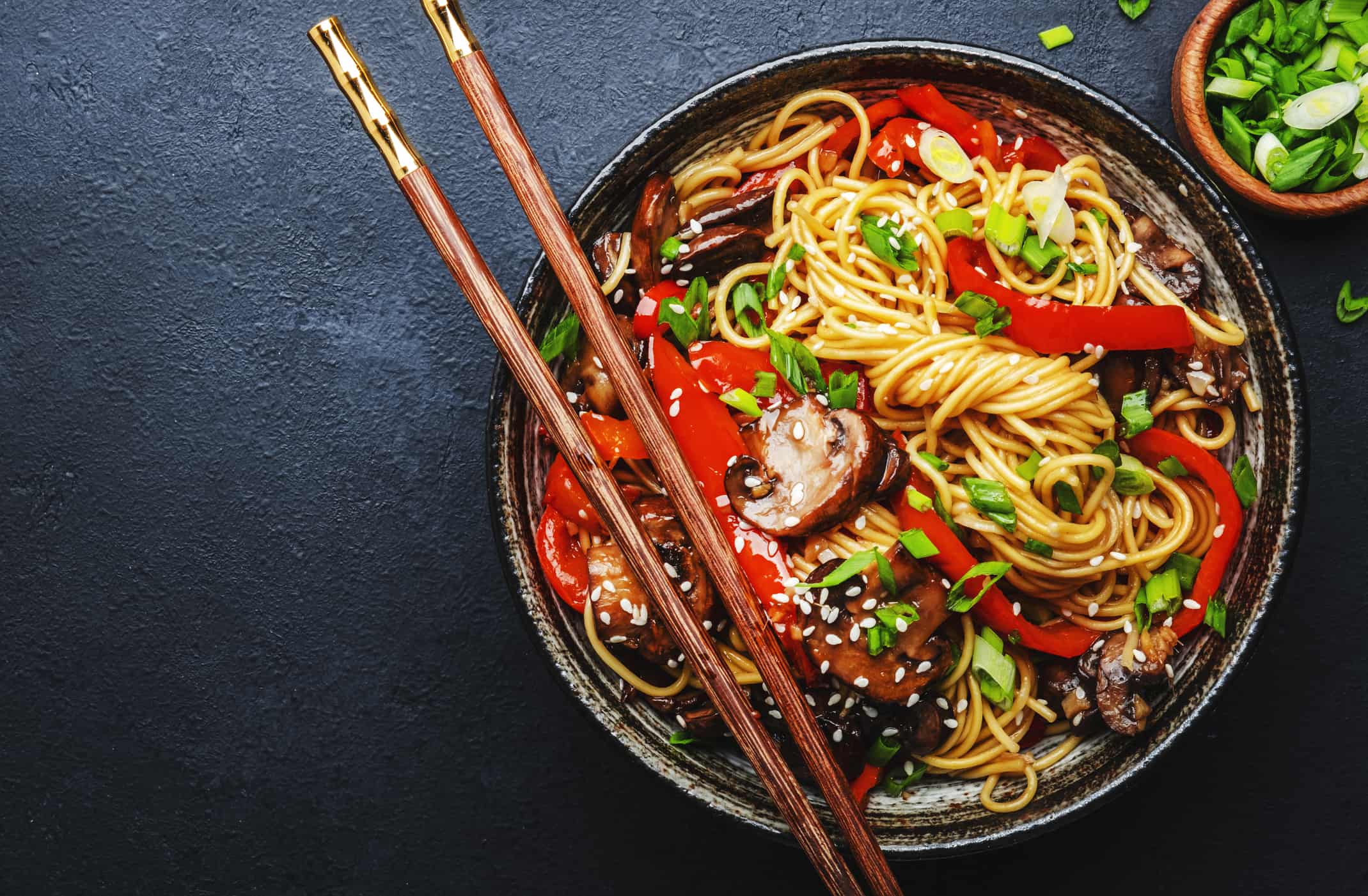
Vegan stir fry egg noodles with vegetables, paprika, mushrooms, chives and sesame seeds in bowl. Asian cuisine dish. Black table background, top view
Who needs ramen noodles when you can choose from a selection of gourmet noodles? Ever since it became popular for Millennials and Gen Z to turn their ramen noodles into a gourmet meal, brands have started to pick up on this trend.
There’s definitely something comforting about a warm bowl of noodles, but with the removal of MSG and other harmful ingredients, these quick and easy meals have become a more viable option for Millennials.
9. Diverse Vegetables
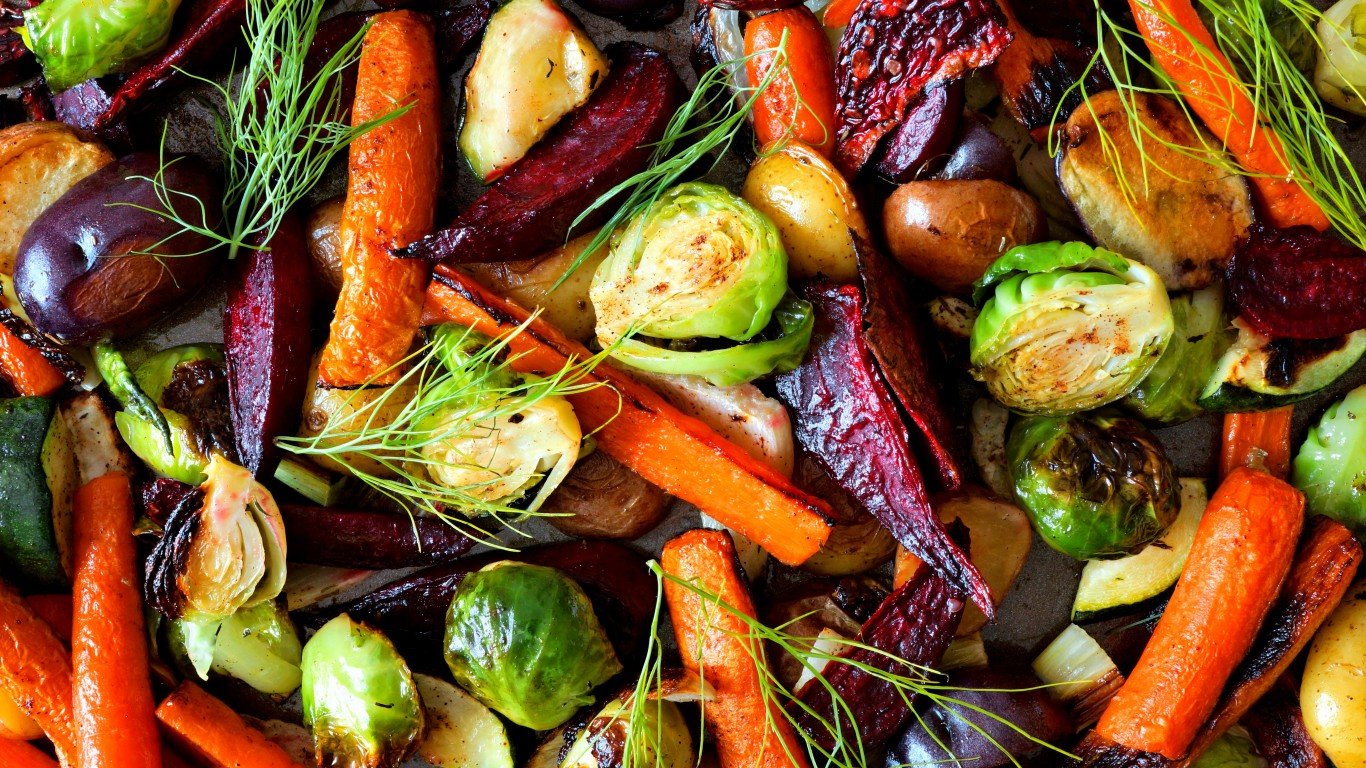
Fresh vegetables are a necessary part of a health-conscious diet. One of the trends in plant-based eating is putting an emphasis on the “plant” part. Instead of focusing only on meatless meat alternatives, there’s a focus on eating meals made of fresh vegetables instead.
There are plenty of diverse vegetables, such as mushrooms, that are a great substitute for meat-based ingredients. The focus on plant-based eating has led to more Millennials purchasing fresh produce and unique vegetables.
10. Buckwheat
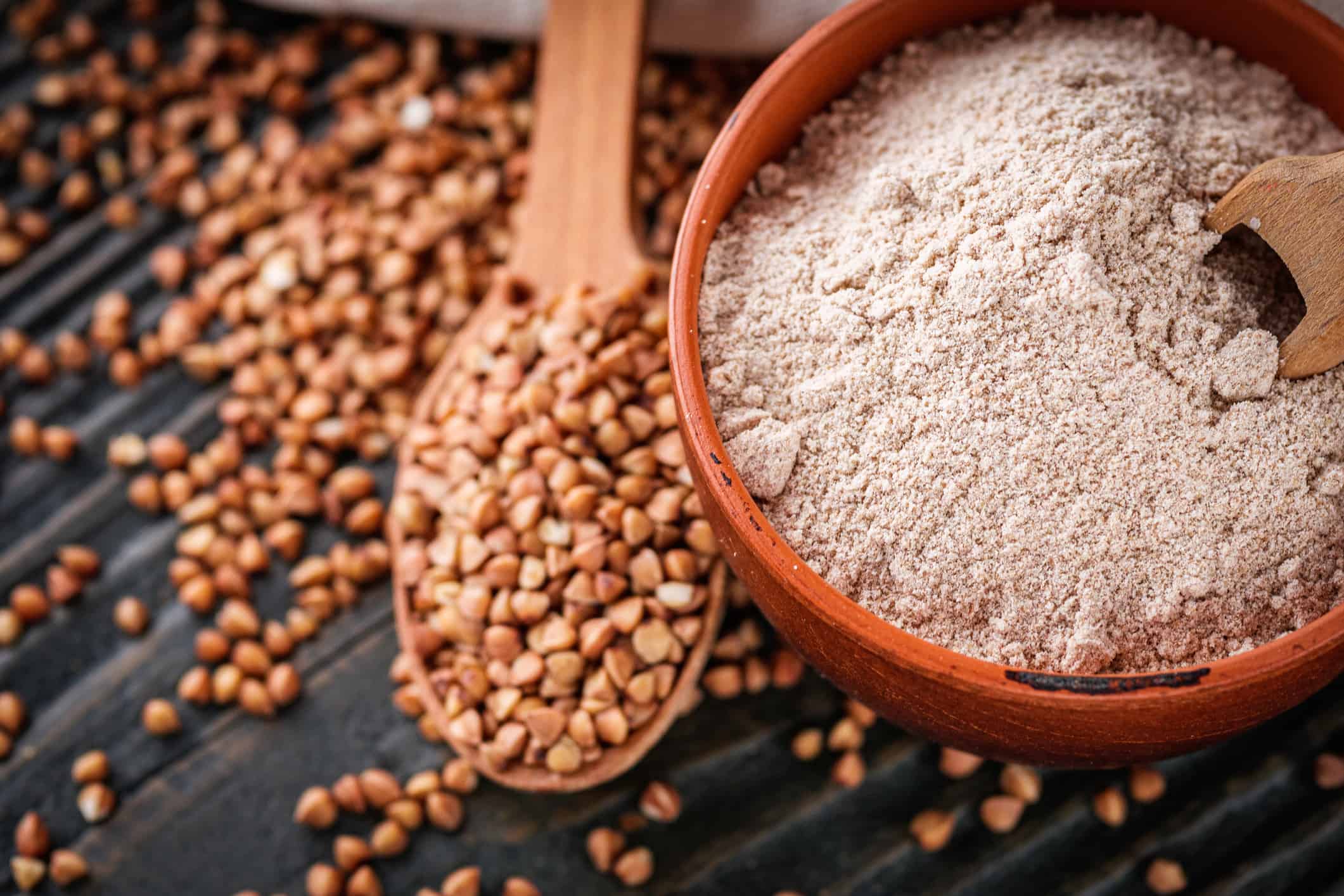
fresh natural buckwheat flour on a dark wooden rustic background culinary concept.
Buckwheat is another trendy ingredient you’ll find in many Millennial shopping carts. This superfood has partially become popular because it’s used to make Soba noodles, but it has many other uses as well.
This grain is highly nutritious and also gluten-free. The gluten-free trend is still alive and well, even for those who aren’t allergic or sensitive to gluten. Gluten-free products have become more widely available even at your typical grocery store. You no longer have to go to Trader Joe’s to find delicious gluten-free items, although we won’t blame you if you decide to head there anyway. (For more Millennial culture content, read about the top toys when Millennials were kids.)
